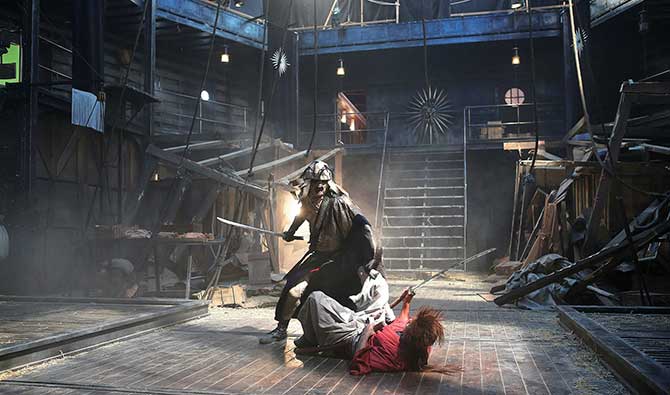Rurouni Kenshin 3
- fanmovies
- August 21, 2024

“Rurouni Kenshin: The Legend Ends” (2014) Review
Director: Keishi Ōtomo
Based on: Nobuhiro Watsuki’s manga Rurouni Kenshin
Starring: Takeru Satoh, Emi Takei, Tatsuya Fujiwara, Munetaka Aoki, Yū Aoi, Kaito Ōyagi
Plot Summary: “Rurouni Kenshin: The Legend Ends” is the third installment in the live-action film adaptation of Nobuhiro Watsuki’s manga Rurouni Kenshin. The film continues the story from “Rurouni Kenshin: Kyoto Inferno,” following the protagonist, Himura Kenshin (Takeru Satoh), as he faces his most formidable adversary yet, Shishio Makoto (Tatsuya Fujiwara). Shishio, a former assassin with a plan to overthrow the Meiji government, poses a significant threat to Japan’s fragile peace. Kenshin, with the help of his allies, must confront Shishio and his powerful band of followers to protect the country and his loved ones.
Review:
1. Storyline and Themes: “The Legend Ends” concludes the arc started in the previous film, “Kyoto Inferno,” delivering a climactic resolution to the conflict between Kenshin and Shishio. The film maintains its focus on themes of redemption, justice, and the personal struggles of its characters. It effectively wraps up the narrative threads from the earlier films, providing a satisfying conclusion to the storyline while highlighting the sacrifices and growth of the characters. The emotional stakes are high, as Kenshin must confront his past and the formidable challenges posed by Shishio.
2. Performances: Takeru Satoh continues to impress as Himura Kenshin, capturing the character’s depth, vulnerability, and skill as a swordsman. His performance is both physically and emotionally demanding, and he effectively portrays Kenshin’s internal conflicts and growth. Tatsuya Fujiwara’s portrayal of Shishio Makoto is equally compelling, bringing a menacing and charismatic presence to the role. The supporting cast, including Emi Takei as Kaoru Kamiya and Munetaka Aoki as Sanosuke Sagara, deliver strong performances that contribute to the film’s emotional and dramatic impact.
3. Direction and Cinematography: Keishi Ōtomo’s direction is dynamic and engaging, effectively balancing action sequences with character-driven moments. The film’s cinematography, by Takuro Ishizaka, enhances the storytelling with its visually striking compositions and fluid action scenes. The use of color and lighting adds to the film’s atmosphere, capturing both the intensity of the battles and the quieter, more reflective moments.
4. Action and Martial Arts: The film excels in its action choreography, showcasing a variety of impressive sword-fighting sequences and martial arts displays. The battles are both visually stunning and strategically complex, with choreographed fight scenes that are both thrilling and true to the spirit of the manga. The climactic showdown between Kenshin and Shishio is a highlight, featuring intricate choreography and high-stakes drama.
5. Music and Soundtrack: The soundtrack, composed by Naoki Sato, complements the film’s action and emotional moments with its evocative and dynamic score. The music enhances the atmosphere, underscoring the film’s intensity and drama while supporting the narrative’s emotional beats.![Rurouni Kenshin 3 [6 พ.ย.57] - YouTube](https://i.ytimg.com/vi/u-VXX9Op4vQ/hqdefault.jpg)
6. Reception and Legacy: “Rurouni Kenshin: The Legend Ends” was well-received by both critics and fans of the manga and previous films. It is praised for its strong performances, impressive action choreography, and effective conclusion to the trilogy. The film has been recognized for its faithful adaptation of the source material and its ability to capture the spirit of the manga. It concludes the live-action adaptation trilogy on a high note, solidifying the series’ reputation as one of the best adaptations of manga to live-action film.
Conclusion: “Rurouni Kenshin: The Legend Ends” is a thrilling and satisfying conclusion to the live-action film trilogy. With its compelling performances, impressive action sequences, and strong direction, it effectively wraps up the story of Himura Kenshin and his battle against Shishio Makoto. The film maintains the high standards set by its predecessors and delivers a fitting end to the saga, ensuring its place as a standout adaptation of the beloved manga series.